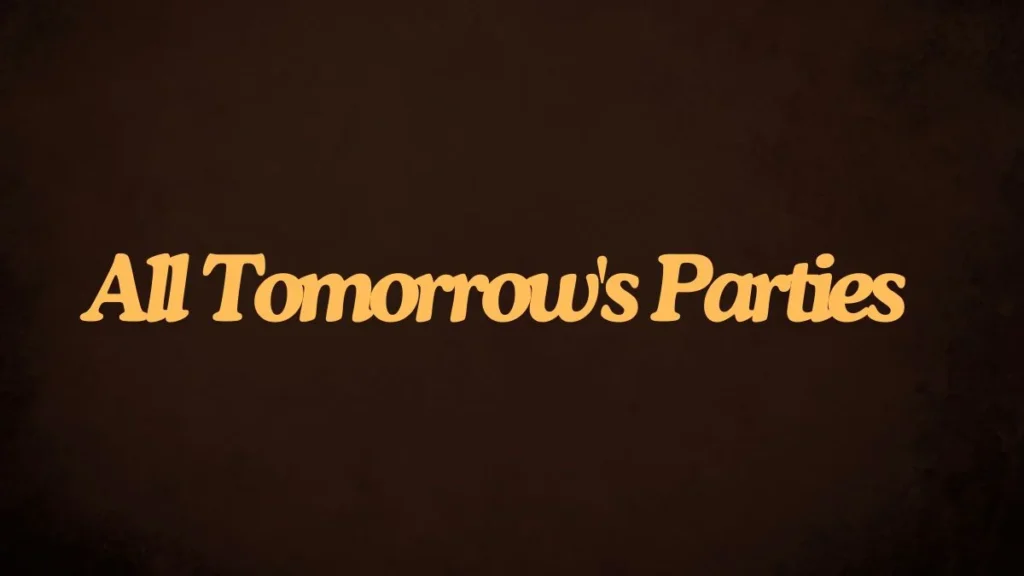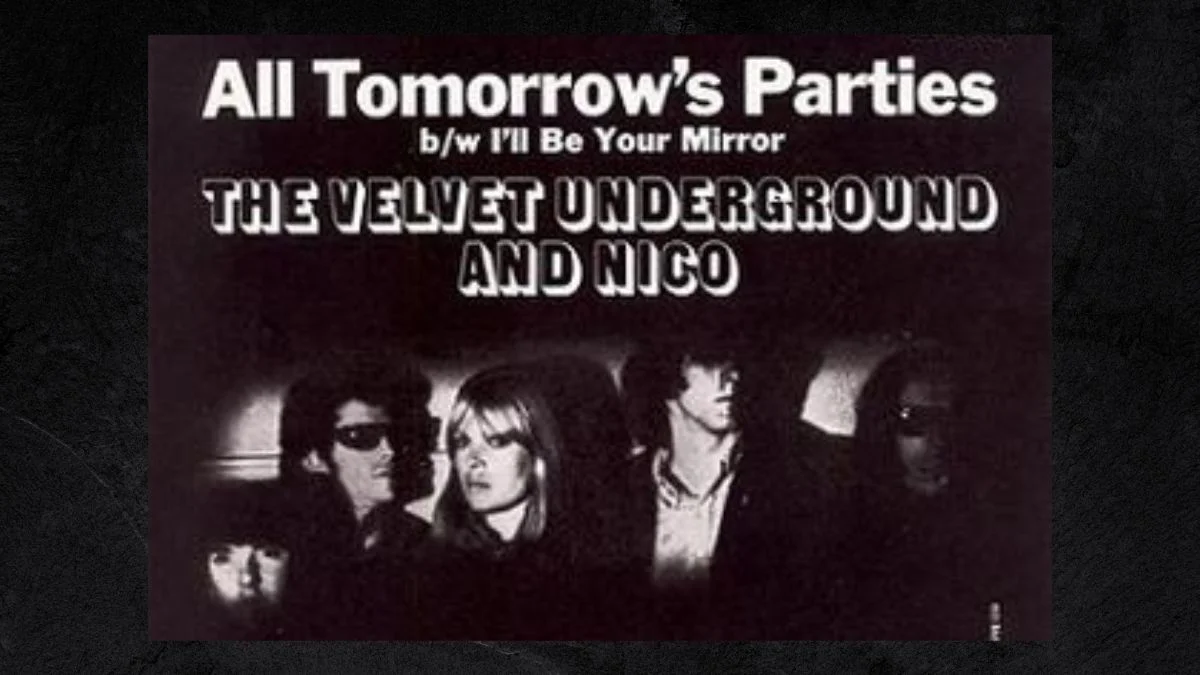“All Tomorrow’s Parties” is a seminal track by the Velvet Underground and Nico, written by the legendary Lou Reed. Released as the band’s debut single in 1966, it also appeared on their groundbreaking 1967 debut studio album, The Velvet Underground & Nico. The song’s significance extends beyond its haunting melody and evocative lyrics, as it offers a glimpse into the enigmatic world of Andy Warhol’s Factory and the people who inhabited it. To understand the meaning behind “All Tomorrow’s Parties,” one must delve into the cultural and social backdrop of the 1960s, the dynamics of Warhol’s clique, and Lou Reed’s perceptive songwriting.
The Velvet Underground & Nico: Pioneers of Art Rock
The Velvet Underground, with its unique fusion of rock, avant-garde music, and lyrical depth, stood apart from the mainstream sounds of the 1960s. The band, formed by Lou Reed and John Cale, was known for its experimental approach and willingness to tackle controversial subjects. Their collaboration with German singer Nico and artist Andy Warhol as their producer brought an additional layer of artistic complexity to their work.
The Velvet Underground & Nico’s debut album is often hailed as one of the most influential albums in the history of rock music. Its raw sound, coupled with Reed’s candid lyrics, captured the essence of urban life and counterculture, making it a cornerstone of art rock.
Andy Warhol and The Factory
To fully appreciate “All Tomorrow’s Parties,” it’s crucial to understand the environment in which it was created. Andy Warhol, a leading figure in the visual art movement known as pop art, was not just the band’s producer but also a mentor and collaborator. His studio, known as The Factory, was a hub of artistic activity and a gathering place for a diverse group of creatives, including musicians, artists, actors, and socialites.
The Factory was notorious for its wild parties and avant-garde events, where the lines between art and life were often blurred. Warhol’s clique, sometimes referred to as the “Warhol Superstars,” included personalities like Edie Sedgwick, Candy Darling, and Nico herself. These individuals were often characterized by their glamorous yet tragic lifestyles, marked by a constant pursuit of new experiences and a struggle with their own identities.
Inspiration Behind the Song
Lou Reed’s inspiration for “All Tomorrow’s Parties” stemmed from his keen observations of the people around him at The Factory. According to Reed, the song is “a very apt description of certain people at the Factory at the time. … I watched Andy. I watched Andy watching everybody.” This dual layer of observation—Reed observing Warhol observing others—adds a meta-narrative to the song, emphasizing themes of voyeurism and self-awareness.
Reed’s lyrics paint a vivid picture of a woman caught in the cycle of the superficial party culture. The repetition of “And what costume shall the poor girl wear / To all tomorrow’s parties” highlights her constant search for identity and acceptance within this fleeting world of glamour and pretense. The use of the word “poor” underscores a sense of pity and perhaps a deeper understanding of the emptiness behind the facade.

The Lyrics: A Reflection on Identity and Ephemerality
“All Tomorrow’s Parties” opens with a somber, almost dirge-like piano played by Cale, setting a melancholic tone that contrasts with the typical upbeat nature of party songs. Nico’s deep, haunting voice adds to the song’s eerie atmosphere, making it clear that this is not a celebration but a lament.
The recurring question of what costume the girl shall wear to all tomorrow’s parties symbolizes the constant pressure to present oneself in a certain way to fit in or be noticed. Each party represents a new opportunity to reinvent oneself, but also a new cycle of superficiality and disillusionment. The phrase “silks and linens of yesterday’s gowns” suggests that the glamour of the past is fleeting and ultimately meaningless.
The song’s structure, with its repetitive lyrics and minimalistic melody, reinforces the monotony and inevitability of this lifestyle. The girl’s struggle is not unique but rather a universal experience among Warhol’s entourage and, by extension, within the broader context of 1960s counterculture.
Warhol’s Influence on the Song’s Meaning
Andy Warhol’s role in shaping the song’s meaning cannot be overstated. Known for his detachment and almost clinical observation of the world around him, Warhol’s influence is evident in the way the song dissects the lives of his followers. His fascination with fame, consumerism, and the ephemeral nature of beauty is mirrored in Reed’s lyrics.
Warhol’s art often focused on the superficial aspects of culture, such as celebrity and mass production, while subtly critiquing them. Similarly, “All Tomorrow’s Parties” explores the shallowness of the party scene, while also evoking a sense of empathy for those trapped within it. Warhol’s ability to elevate the mundane to the level of art is paralleled by Reed’s ability to find profound meaning in the seemingly trivial experiences of the Factory’s inhabitants.
Cultural Impact and Legacy
Over the years, “All Tomorrow’s Parties” has become one of the Velvet Underground’s most enduring songs, celebrated for its lyrical depth and haunting beauty. Its influence can be seen in the work of countless artists and musicians who followed in the band’s footsteps.
The song’s exploration of identity, superficiality, and the quest for meaning remains relevant today, resonating with new generations who grapple with similar issues in the age of social media and digital personas. The Factory’s party culture, with its blend of art, celebrity, and hedonism, finds echoes in contemporary scenes, making the song a timeless reflection on human nature.
Conclusion: All Tomorrow’s Parties
“All Tomorrow’s Parties” is more than just a song; it’s a poignant commentary on the human condition, set against the backdrop of one of the most vibrant and chaotic periods in modern art history. Lou Reed’s insightful lyrics and the Velvet Underground’s innovative sound capture the essence of Andy Warhol’s Factory, offering a window into a world where the pursuit of identity and meaning is both a personal struggle and a collective experience. The song’s enduring legacy lies in its ability to transcend its time and place, speaking to the universal themes of self-discovery, superficiality, and the fleeting nature of existence.









